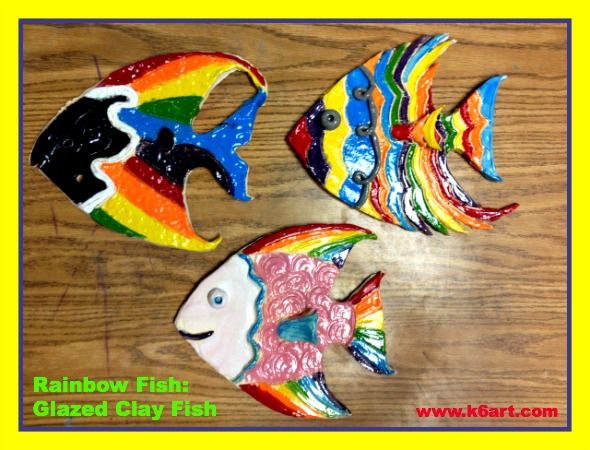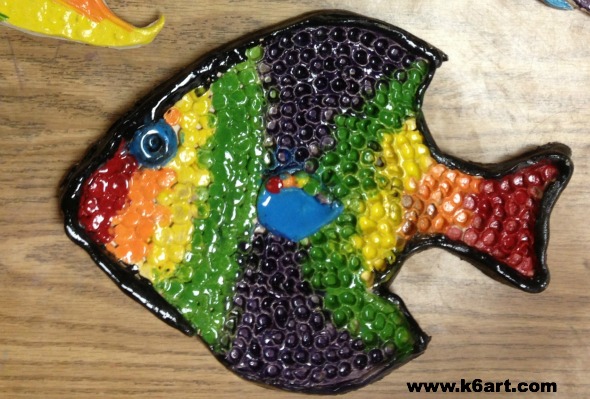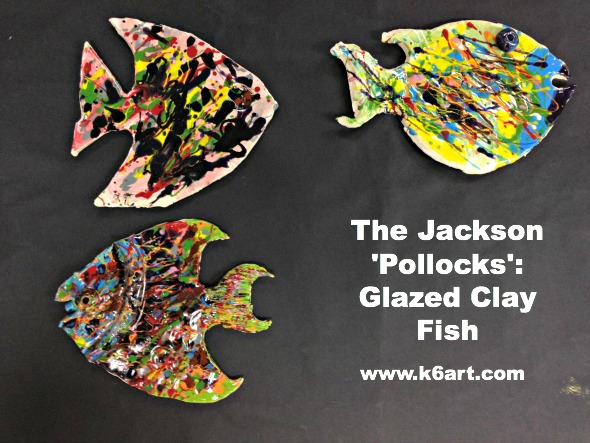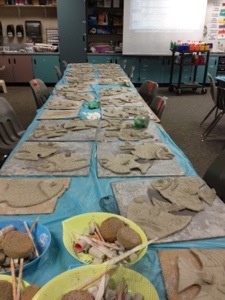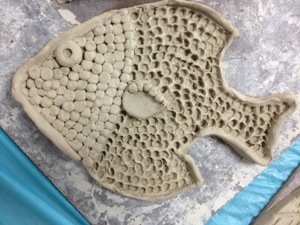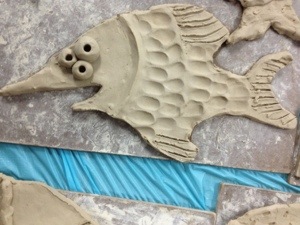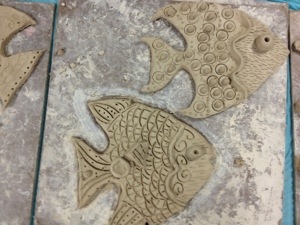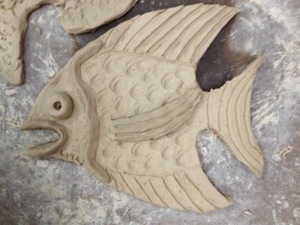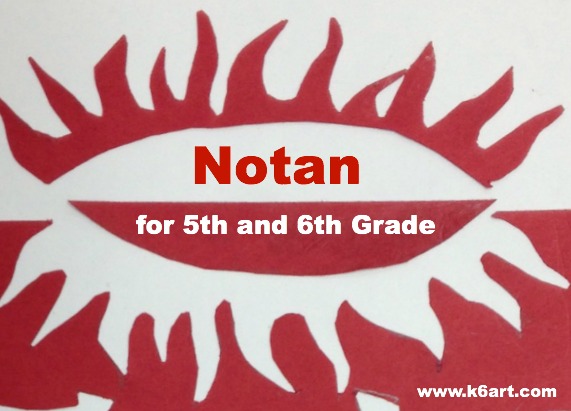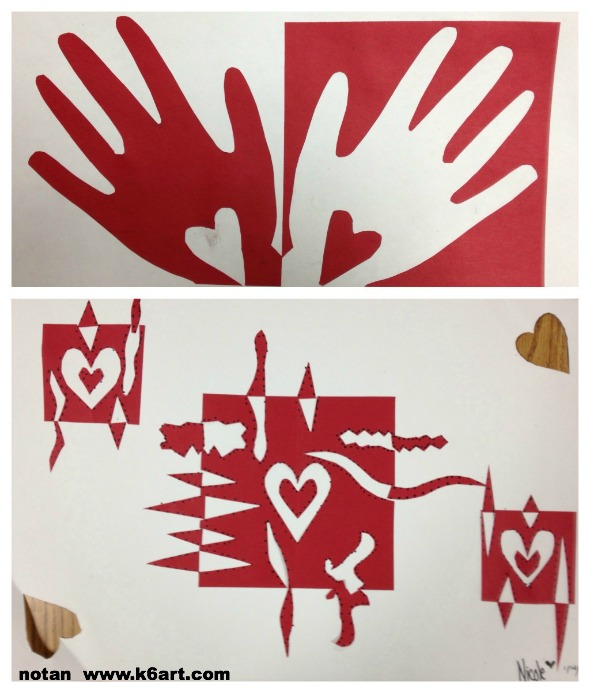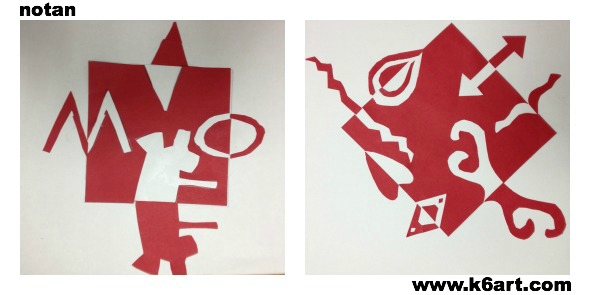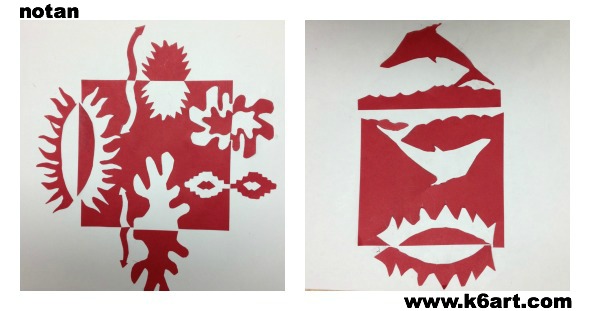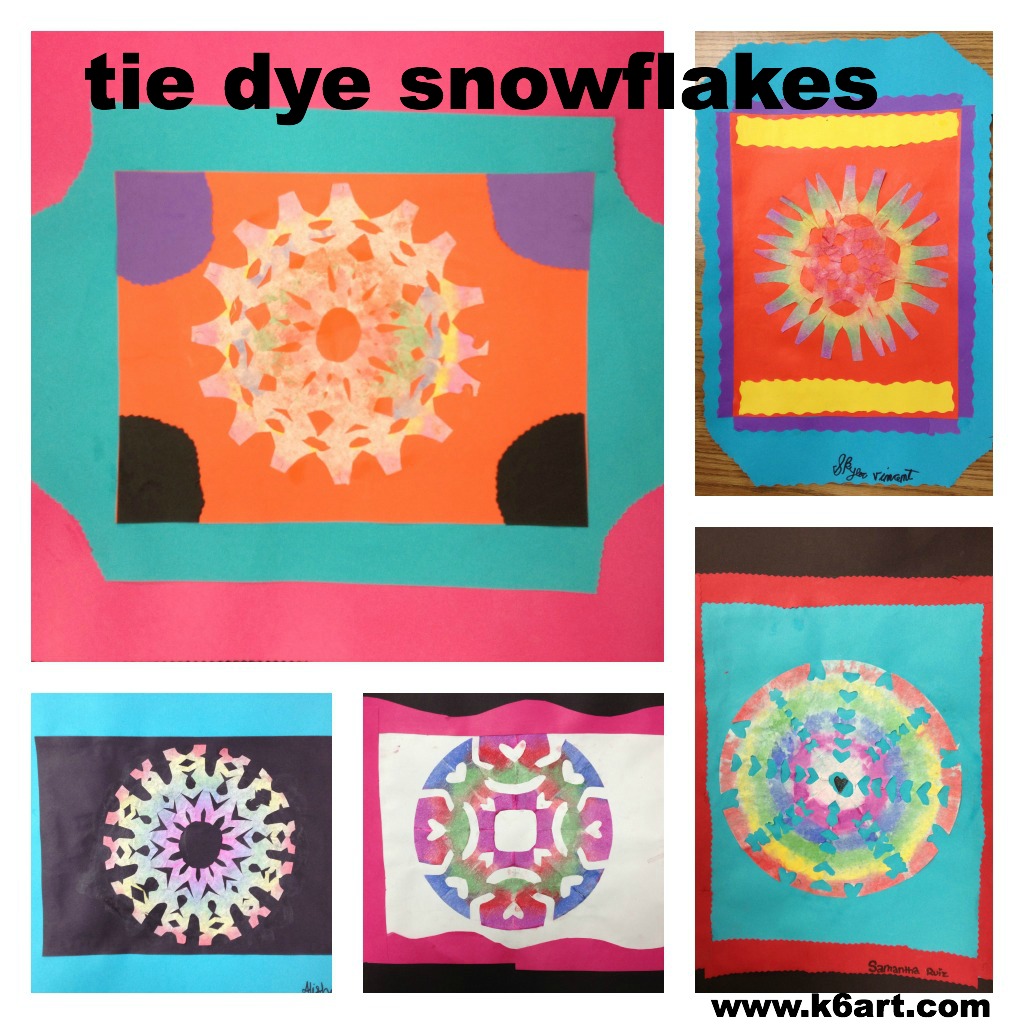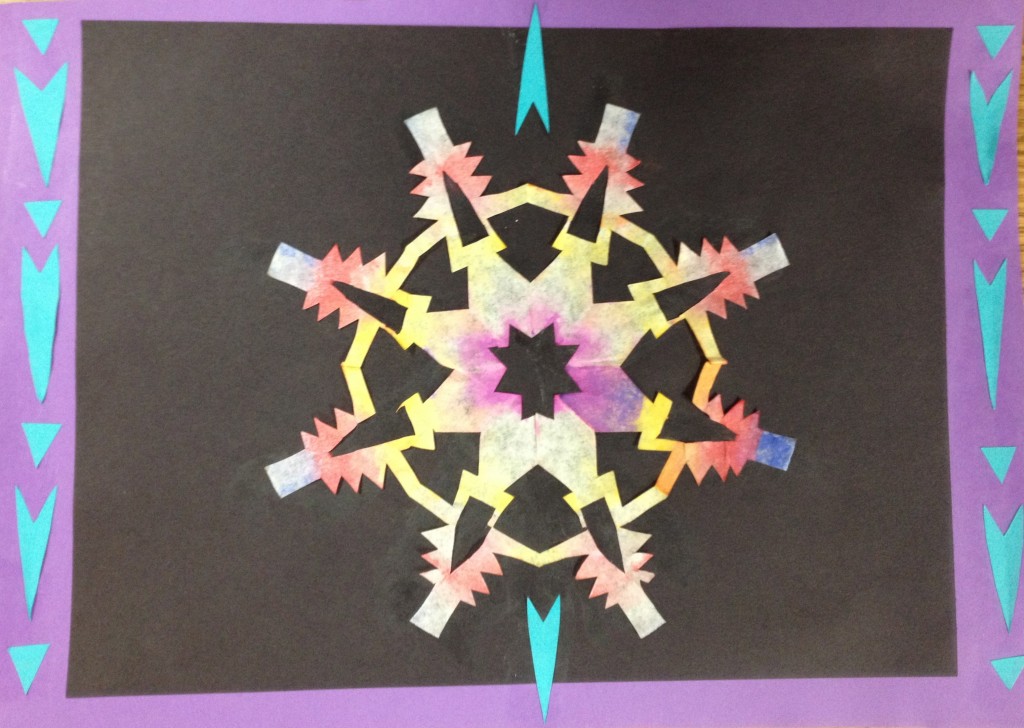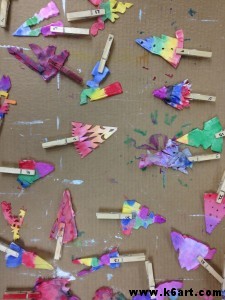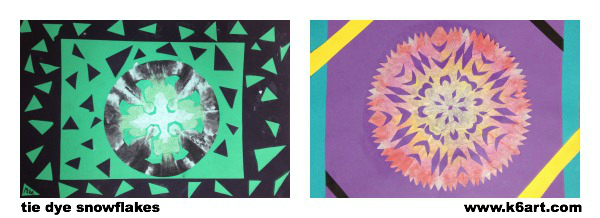So many fish in the sea!
Our sixth grade finished the slab clay fish project. Although I provided a choice of just three templates, students were able to customize them through re-shaping, texture, and glaze. We ended up with a wide variety of fish.
These three rainbow fish started from the same template. Artists scratched lines into the wet clay to make stripes. Later they painted these defined areas. Students who did this technique ended up with neatly glazed fish. Caution: avoid scratching a line across the narrowest part of the tail – it will be more likely to break.
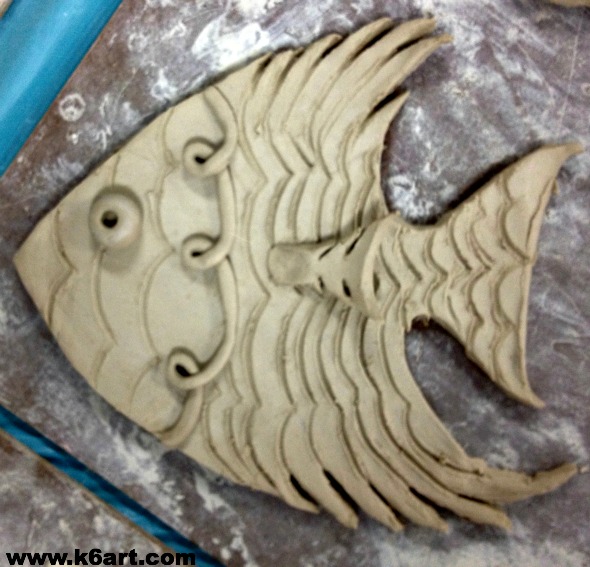
Want to make a rainbow fish? Make shallow lines in wet clay with a skewer. Glaze fired clay – try to stay inside the lines!
Here is a different rainbow fish. The artist used a different template, then created texture with tiny balls of clay and the eraser tip of pencil. The fish is trimmed with a thin clay coil, which the artist later glazed shiny black.
NICE WORK SIXTH GRADERS!!!
I wrote how to roll and cut the fish here and here. More glazing examples here. More examples next week!

